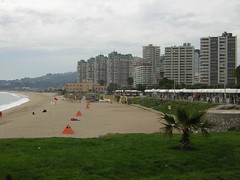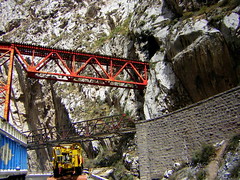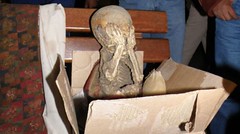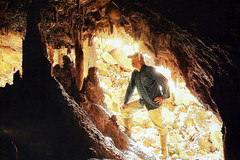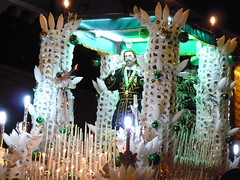The Tumi is a ceremonial knife used by ancient Peruvian cultures as a means to perform sacrifices. It consists of two parts, a semi-circular blade and a handle often representing the northern Peruvian God Naymlap. The ceremonial knife is usually made from solid gold, though sometimes bronze or copper, these metals representing the sun, from which Andean cultures believed all human life descended.
Category: "Culture"
Noche Buena and The Peruvian Christmas
Those of us from the Northern Hemisphere probably associate Christmas with pine trees, mistletoe and, oh yeah, cold weather. However, for those countries located below the equator, the holiday occurs right at the start of the summer season. Peru is one of the countries that have the luck to be able to celebrate this holiday in mild temperatures. The differences don’t stop there as much of the way in which Peruvians celebrate Christmas is unique, especially when it comes to what foods they eat.
INC-LL Dance Performed by UPAO
We saw a show in Trujillo put on by the INC of La Libertad to celebrate 49 years of them not doing very much other than receiving a salary.
The show was good, but I particularly enjoyed this act. Play the video…
Tondero Piurano
The prolonged wait for spring to arrive in Lima has had me thinking of Piura, a sun-drenched paradise rich in creole culture.
The video below is of the famous Tondero dance of Piura.
Antioquia
As part of the series Explorando Lima, in which I demonstrate the immense diversity that Peru has to offer without even leaving the region of Lima, I visit Antioquia, a town that brightened its future with a lick of paint.
Alameda de los Descalzos
The Alameda, in the heart of the northern district of Rimac, north of the river Rimac and the centre of the city, was originally built in 1611 by the Marquis de Montesclaros.
Later in 1770 Viceroy Manual de Amat refurbished it, adding donated fountains from the chief of Lima’s bullfighting ring.
The Royal Inca Weavers of Huamachuco
In Huamachuco, descendants of royal weavers produce beautiful, world-renowned belts and blankets.
In 1977 the only way into Tulpo, Mollepata, and Mollebamba, towns located within the boundaries of the ancient hacienda of Tulpo, was on foot or by horse. I recognized that something had happened that set these people and their blankets apart from others in Peru. The textiles around Tulpo, Mollepata, and Mollebamba were just far too different and beautiful to think otherwise. More than twenty-five years later I was to learn why.
Abimael Guzmán – The Movie!
Abimael Guzmán was the leader of the terrorist group The Shining Path, and group that brought misery, death and destruction to all of Peru – but Ayacucho in particular. An independent movie has now been made about the leader’s capture.
Puno’s great party: Virgen de la Candelaria
They say that only the carnival in Rio-Brasil and the carnival in Oruco-Bolivia compare to this, the biggest party in Peru in the city with the most traditional dances in the world – Puno.
Superstitious New Year
Peru has dozens of superstitions that are believed unquestionably – the most colourful being at the ones to bring luck, health and money in the new year.
Eva Ayllón
I was lucky enough to see Eva Ayllón perform once, on one of her quite rare visits home to Peru from the United States where she now lives.
Eva is a famous singer of Musica Criolla – a genre of blended African, Spanish and Andean influences. Marinera, a type of criolla music and dance, can be seen in the video below.
Quechua street names
It’s nice to walk around Cusco and see street names in the Quechua language, the language of the Incas. These two are particularly fun to pronounce.



